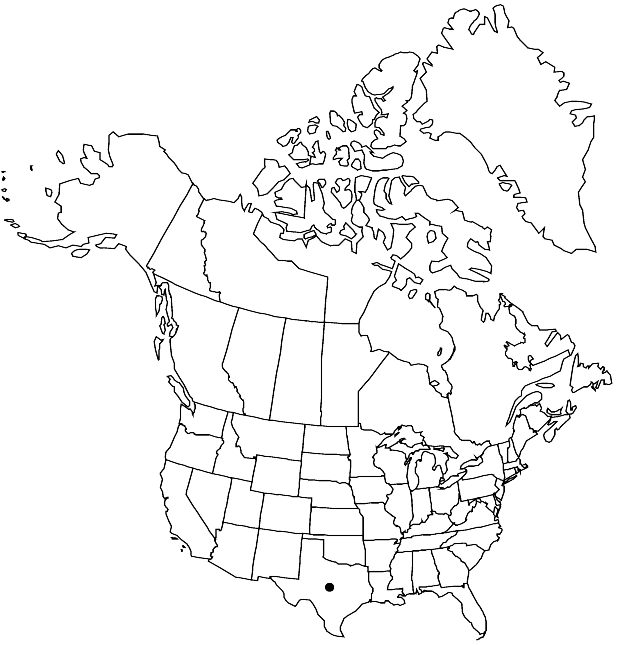Physaria lindheimeri
Novon 12: 325. 2002.
Annuals or biennials; with a fine taproot; densely pubescent, trichomes (sessile or short-stalked), 4–7-rayed, rays usually furcate at base, sometimes bifurcate, (rough-tuberculate throughout). Stems several from base, erect or outer decumbent, (often several-branched, branches slender and flexuous), to 8 dm. Basal leaves: blade pinnatisect to repand, 3–9 (–14) cm, margins entire. Cauline leaves (sometimes secund, proximal usually petiolate, distal sessile); blade elliptic, 1–6 cm, (distal with cuneate base), margins entire or deeply dentate. Racemes dense. Fruiting pedicels (horizontal or recurved and ascending at tip, sometimes loosely sigmoid), (5–) 10–20 mm. Flowers: sepals elliptic to oblong, 3–5.5 mm, (median pair slightly thickened apically, cucullate); petals (sometimes drying slightly purplish), suborbicular or broadly ovate, 4.5–7 (–9) mm, (narrowing gradually to short claw). Fruits globose or broadly ellipsoid, not or slightly inflated, (4–) 5–8 mm, (smooth); valves (not retaining seeds after dehiscence), glabrous; replum as wide as or wider than fruit; ovules (8–) 12–16 (–20) per ovary; style (1.5–) 2–3 (–4) mm. Seeds flattened. 2n = 12.
Phenology: Flowering Dec–Apr.
Habitat: Heavy, black, claylike soils, or lighter, sandy soils, thickets, field-margins, roadsides, coastal prairies
Elevation: 20-800 m
Distribution

Tex., Mexico (Tamaulipas)
Discussion
Selected References
None.
Lower Taxa
"not" is not a number. "elongated" is not a number."thick" is not a number."dm" is not declared as a valid unit of measurement for this property.